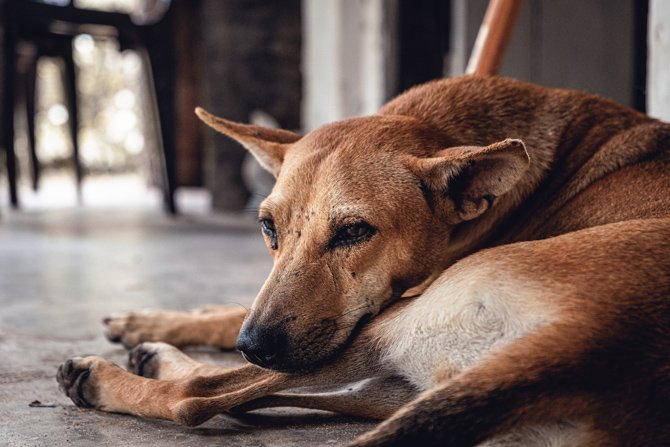Experts say the arrival of Ehrlichiosis (tick-borne disease) is destroying dog populations in northern Australia and is quickly spreading across the country.
The disease was first detected in May 2020. Since then it has been found in more than 500 dogs across northern Australia and certain parts of South Australia and New South Wales. Given that many dogs have died without testing or treatment, it’s likely the number of affected dogs is much higher.
Dr Liisa Ahlstrom, Technical Services Veterinarian, animal health solutions, Elanco, says the ehrlichiosis epidemic is the most significant disease to impact dogs in Australia in the past 30 years.
“The disease is caused by a bacterium, spread between dogs by the brown dog tick; and unlike some other tick-borne diseases, ehrlichiosis can be transmitted rapidly – within three hours of a single tick bite. In order to create a first line of defence and control the outbreak, it is imperative to repel ticks before they bite.”
Tick prevention
Commonly used tick prevention products work by incorporating an active chemical that paralyses and kills ticks. However, these products rely on the tick biting the animal in order for the chemical to be released into the tick.
While these traditional tick-protection products do play an important role, they don’t stop ticks from biting. Yet, to reduce the transmission of ehrlichiosis, it’s essential to repel ticks before they bite, experts claim.
Given the fact that ehrlichiosis is spreading so rapidly within Australia, an emergency permit has been granted to allow the use of the Seresto Collar for Dogs.
Dr Ahlstrom explains, “Due to the rapid spread and significant threat to animal welfare, the Seresto Collar for Dogs has been approved by the veterinary medicines regulator Australian Pesticides and Veterinary Management Authority (APVMA) under a special permit.
“The permit has been granted to reduce the transmission of this notifiable disease between dogs by brown dog ticks because, unlike most tick products, Seresto repels and kills ticks on contact, so they are killed before they bite.
“Seresto repels and kills ticks on contact, so they are killed before they bite. Although there are many highly effective tick products available, most are systemically-acting (i.e. all the chews, tablets and most spot-ons), rely on ticks biting the dog and feeding on blood to receive a lethal dose of the active ingredient, and kill ticks too slowly to stop transmission of disease,” explains Dr Ahlstrom.
“However, all products that effectively kill brown dog ticks do have a role to play in helping to contain this disease outbreak at a population level, by reducing the numbers of the brown dog tick vector. But it’s important to make it clear, that only a topically acting product that repels ticks to stop them biting, like Seresto, is able to protect dogs from becoming infected. Seresto for Dogs is a long-lasting, water-resistant collar containing imidacloprid and flumethrin that repels ticks and kills fleas and ticks on contact, and reduces the transmission of tick-borne diseases, including ehrlichiosis.”
How exactly does the Seresto collar work?
“The unique polymer matrix of Seresto enables the release of controlled doses of two proven active ingredients: imidacloprid, a very potent insecticide, and flumethrin, a highly potent acaricide. The innovative polymer matrix stores the active ingredients in the collar itself,” Dr Ahlstrom says.
“The inclusion of neutral oils in the collar matrix allows for the migration of active ingredients from the collar matrix to the surface of the collar to form a micro-layer. This migration is controlled by a concentration gradient between the collar matrix and the collar surface – once their concentrations are balanced, further release of active ingredients stops.
“Assisted by the collar’s neutral oils, the active ingredients transfer from the micro-layer on the collar surface into the natural lipid layer of the dog’s skin and hair. The active ingredients spread via diffusion over the body surface within the lipid layer. The depletion of active ingredients from the collar surface to the dog’s lipid layer triggers further migration of actives (along their concentration gradient) from the collar matrix to the collar surface, to restore the concentration equilibrium. As a result, active ingredients continue to migrate from the collar matrix to the collar surface only as needed, ensuring low-dose protection is sustained for up to 8 months for fleas and 4 months for ticks in dogs.”
Advice for dog owners
Discussing the spread of ehrlichiosis with your clients is important to raise awareness of the fact the disease is on the rise. Dog owners can also be encouraged to look out for symptoms their dog has been affected.
Signs of infection include:
- fever
- lethargy
- weight loss
- enlarged lymph nodes
- loss of appetite
- discharge from the eyes and nose
- cloudy eyes
- swollen limbs
- anaemia and bleeding disorders such as nosebleeds or bleeding under the skin that looks like small spots, patches or bruising
“Dog owners should check their dog regularly for ticks, even 2-3 times per day if you’re travelling to high-risk areas. If your dog becomes unwell, report any symptoms immediately to a local veterinarian – as ehrlichiosis is a notifiable disease, all suspected cases must be reported to state veterinary authorities managing the outbreak, “ advises Dr Ahlstrom.
“With the first case in Victoria detected in a dog this week, school holidays imminent and driving holidays with pets on the rise, the risk of the disease spreading to suburbs and cities is increasing. As the school holidays approach, we’re imploring pet owners to take simple precautions to make sure that their dogs and others are not exposed to unnecessary risks,” she adds.
Related post:
Image source: Daniele Franchi on Unsplash
Latest posts by Liz Walden (see all)
- Pet health: Medicinal cannabis for pets - December 27, 2021
- What pet business insurance do I need? - November 17, 2021
- Pet sitters: how to take time off - November 15, 2021










Leave A Comment